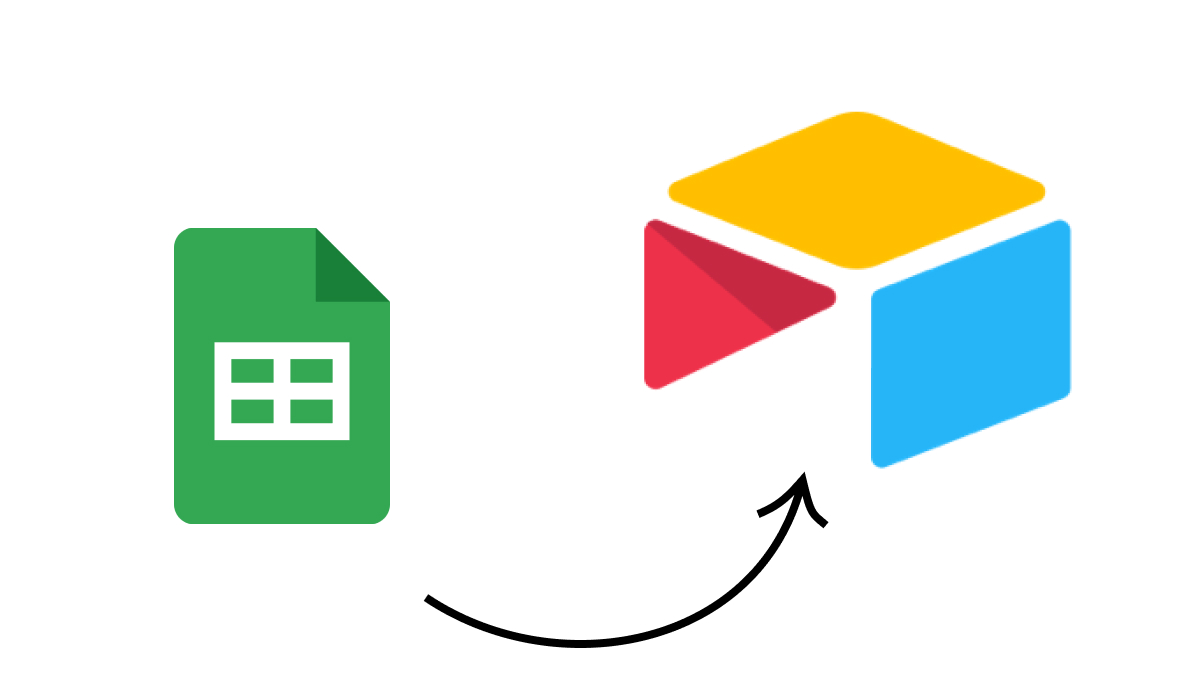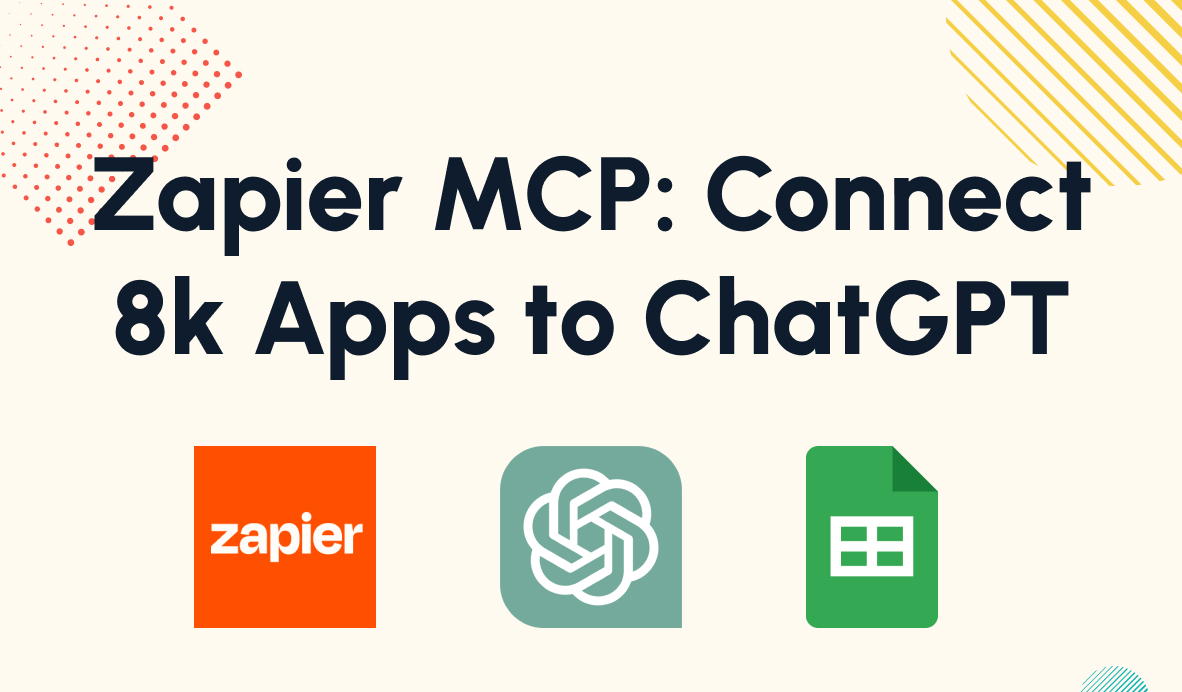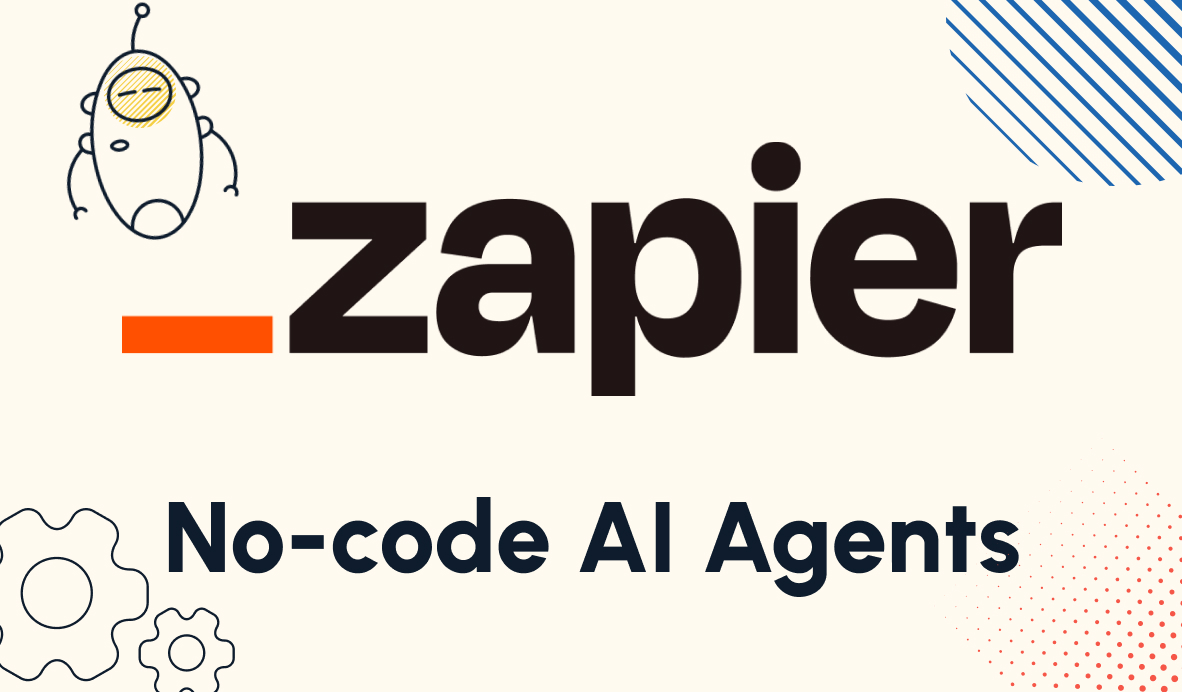Airtable September ’24 Update: HyperDB, App Library, App Sandbox and More
Recently, Airtable has started rolling out HyperDB, a new feature that will let enterprise users access millions of records from external databases in Snowflake, Databricks, Salesforce and more.
October 14, 2024

Airtable, the popular low-code database and workflow platform, has just announced a game-changing update for enterprise teams and anyone working with large datasets. Their new "HyperDB" feature now allows users to access and work with databases containing tens of millions of records, far surpassing Airtable's previous record limits.
Record limitations in Airtable
Airtable bases on even the highest Enterprise plans are limited to 500,000 records per base and 250,000 records per table. This has made working with datasets in the millions of records very challenging, often requiring complex workarounds.
One of the main reasons users have choses tools like Google Sheets over Airtable has been the ability to work with larger datasets, as Sheets supports over 10 million cells.
How HyperDB Overcomes Record Limits
HyperDB is opening up new possibilities for working with large datasets by allowing you to store your data in an external database like Snowflake or Databricks, which have much higher record capacities. You can then use HyperDB to sync specific subsets of that data into your Airtable bases and tables as needed.

For example, you could store a 50 million record product database in Snowflake, but sync only the most recent 100,000 records to an Airtable table.
Alternatively, you could sync records for different years or product categories into separate bases. The synced data remains connected, so you can easily change which records are pulled in.
Use Cases for HyperDB
While individual Airtable tables and bases still have the same record limits, HyperDB makes it much more straightforward to connect them to massive external datasets. This enables large-scale data processing, automation, and reporting use cases that were previously impractical in Airtable alone.
For instance, you might use HyperDB to power operational analytics, or machine learning workflows that require analyzing millions of records.
HyperDB is currently in beta and only available to customers on Airtable's Enterprise plans. Interested companies will need to contact Airtable to request access.
Additional new features in Airtable
In addition to HyperDB, Airtable has unveiled new features to help users manage and update their bases.
App Library: centrally controlled templates for your team
The new App Library allows you to create reusable base templates that teams can copy for their own purposes while maintaining a dynamic link to a central reference version.

For example, you could build an "OKR Tracker" app library for use across your company. Each department can spin up their own OKR tracking base from the template, customized to their needs. But the template owner can still push updates and gather roll-up reporting from all linked bases.
This promotes consistency and data consolidation even as teams adapt bases to their unique workflows.
App Sandbox: risk-free experimentation and seamless updates
The App Sandbox provides an isolated environment to test changes to a base before deploying them to your team's live version. This allows you to experiment with new formulas, automations, and app structures without the risk of disrupting active workflows.
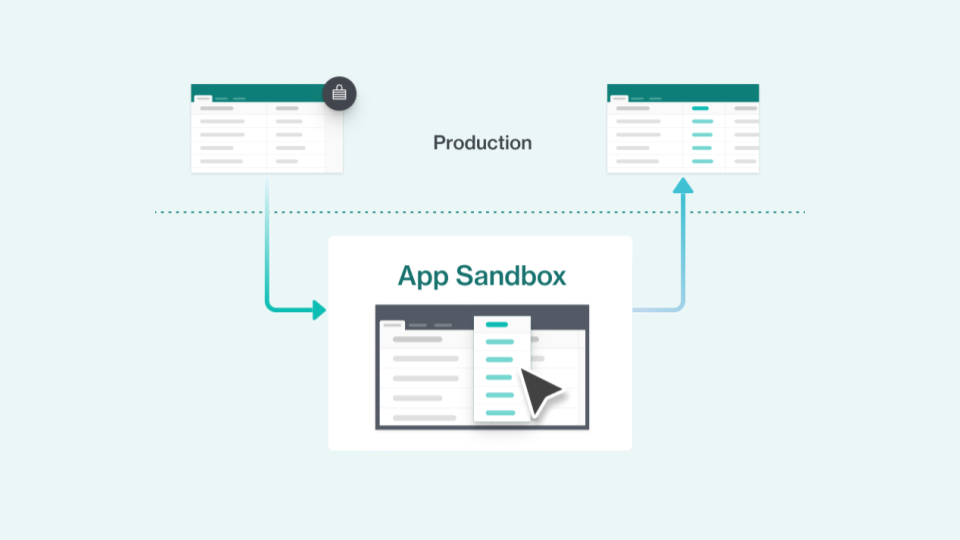
The sandbox is a game-changer for Airtable developers and builders, as it allows them to iterate more quickly and safely, whether improving their own team's bases or building client projects as an Airtable consultant or agency.
Organization Branding: add your company’s logo and colors to Airtable
Enterprise plan customers can now customize their bases with their own logo and colors in place of Airtable's default branding. This is especially useful for agencies, consultants, and others building client-facing applications on the Airtable platform.
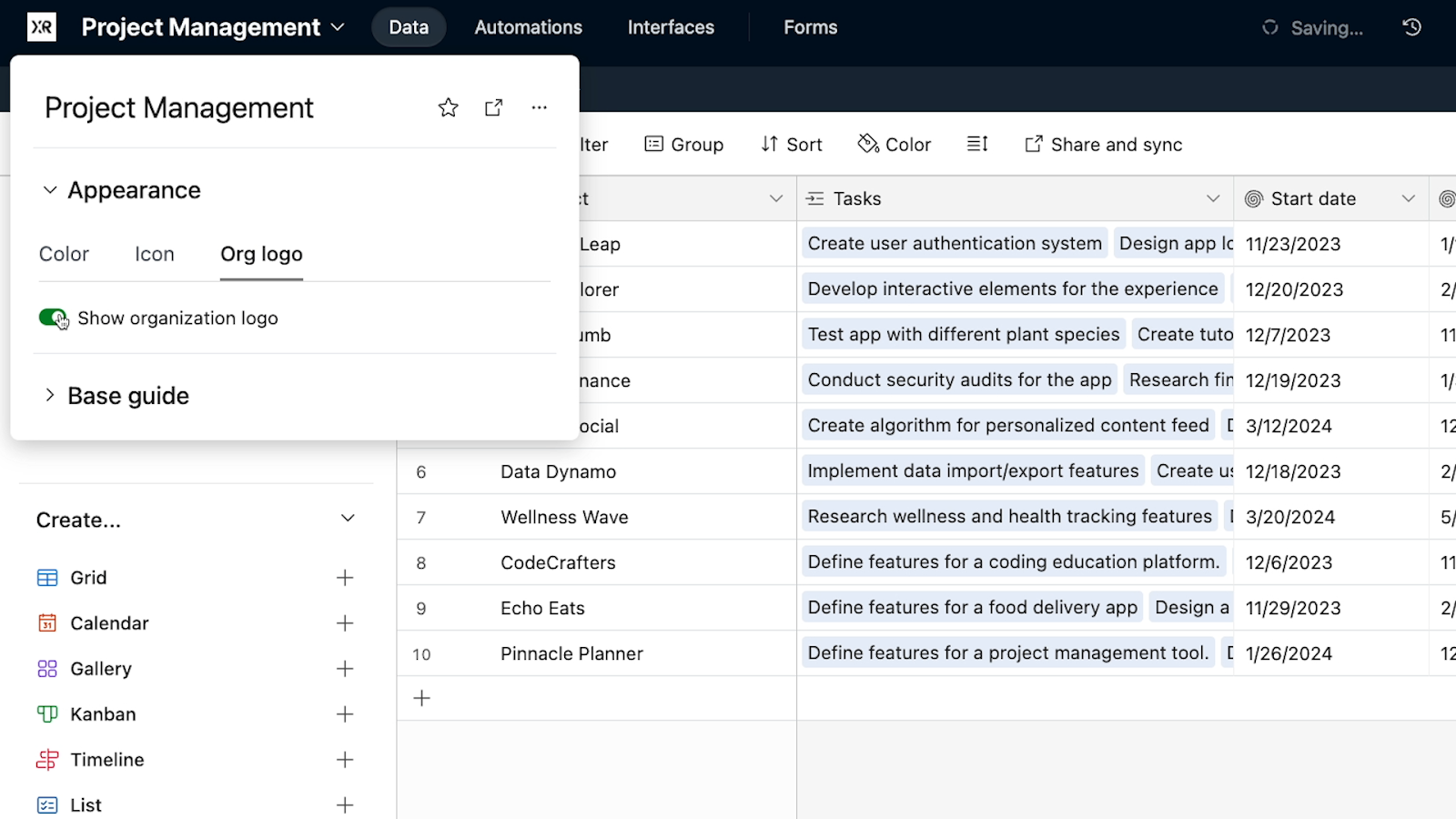
Branded bases provide a more polished, professional, and trust-inspiring experience when sharing them with external stakeholders, while still leveraging all of Airtable's flexible database and workflow functionality under the hood.
The App Library and branding options are currently available for all Enterprise customers. The Sandbox is in beta, with Business and Enterprise plan users able to request access.
Learn more about all recent Airtable updates here
Our take
At XRay, we're extremely excited about HyperDB and the possibilities it opens up for our clients. Many of the companies we work with have huge proprietary datasets they want to build workflows around, and HyperDB is going to make that possible. HyperDB is a major step forward in making Airtable an ideal platform for enterprise-scale low-code application development.
We're also very pleased to see Airtable making investments in other areas that will help larger organizations adopt the platform, like the app sandbox and expanded branding options. We expect these updates to make a real difference for companies looking to run mission-critical processes on Airtable.
Reach out to us if you'd like to discuss how your team can make the most of these new Airtable capabilities. As an Airtable Gold Partner, we're here to help you build powerful, scalable low-code workflows.
If you’d like to learn more about software like Airtable, Zapier, Softr, and more, check out the other posts on our blog or our YouTube channel. You can also follow XRay on Twitter, Facebook, or LinkedIn.



